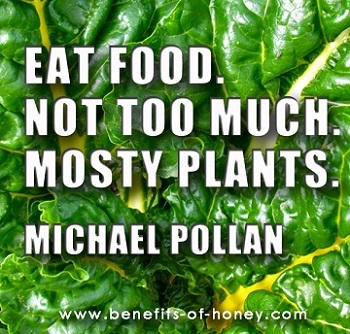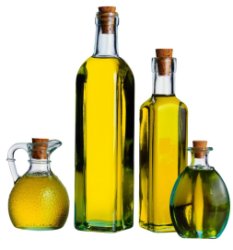
Low Fat Diet: What does it Comprise?
Eating a low fat diet has long been associated with good health, weight losing, reducing risk of developing life-threatening heart diseases and multiple health issues.
Fat is not entirely evil; a certain amount of fat is critical to our bodily functions. It regulates body temperature, cushions and insulates organs and tissues. As the most concentrated source of calories (nine calories per gram of fat compared with four calories per gram for protein and carbohydrates), fat is the main form of our body's energy storage. It also provides linoleic acid, an essential fatty acid for growth, healthy skin and metabolism, and helps absorb fat-soluble vitamins (A, D, E and K). Furthermore, fat also does have another extremely important role (which I believe all food lovers will agree with me) – a small amount of fat in food can improve the taste of food drastically and make a world of difference!
However, one problem with fats is that they are very high in calories (i.e nine calories, as mentioned earlier). Eating more calories than your body can lead to weight gain, which increases your risk for developing health problems such as high blood pressure, high cholesterol, heart disease, stroke, diabetes, cancer, gallstones, and gout.
Foods that are high in fat includes dairy foods (e.g whole milk, ice cream, butter, cheese), fatty red meats, egg yolks, which are particularly high in cholesterol, processed meats (sausage, salami, hot dogs), and deep-fried foods.

A low fat diet often comprises fruits, vegetables, fish, cereals, rice, pasta, nuts and seeds. However, we also need to understand that not all fats are equal. More and more studies reveal that bad fats increase the risk for certain diseases while good fats lower the risk. The idea of healthy eating and following a low fat diet is about knowing how to choose good fats over bad fats. In other words, the key is to substitute good fats for bad fats.
Bad Fats

Saturated fats
These are found in high quantities in foods of animal origin. As they are converted to cholesterol by the liver, we should not indulge in them. These fats are solid at room temperature. Eating too much saturated fat is strongly related to higher cholesterol levels. However, be cautious when reading food labels; foods that claim to have "No Cholesterol" can be very high in saturated fats! For instance, while coconut and palm oils contain no cholesterol, they are high in saturated fat and should be avoided in a low fat diet. Instead, take olive oil ,the primary source of fat in Mediterranean recipes that has a much lower proportion of saturated fat. Fruits and vegetables are very low in saturated fat and total fat, and have no cholesterol. A diet high in fruit and vegetables may also help to improve cholesterol levels for those with high cholesterol.
Trans Fats
Trans fats are actually unsaturated fats, but they can raise total and LDL (bad) cholesterol levels while also lowering HDL (good) cholesterol levels. Any item that contains "hydrogenated oil" or "partially hydrogenated oil" likely contains trans fats. Hydrogenation is the chemical process that changes liquid oils into solid fats. It's used to extend the shelf life of processed foods, typically in stick margarine, baked and fast foods such as ice cream, cakes, cookies, chips, shortening, popcorn, and French fries. Hydrogenated or trans fats are harmful to the heart and have been associated with some cancers. You probably have noticed more and more brands of potato chips are screaming "trans-fat free" on their packaging in the marketplace. Now, take note, a food can be labelled as having zero trans fats or "Trans fat Free"- even if it contains trans fats. The FDA states that if a serving of a food has 0.5 gram or less per serving of trans fats, then it can be labelled Trans Fat Free. And when you find out what constitutes a serving (e.g 5 crackers, 2 cookies, 1 cup of popcorns...), you would realise how easy it is for those who are keeping a low fat diet to be fooled and overeat trans fat. So, next time you go shopping, even if the food label claims zero trans fat, look for the words "partially-hydrogenated", "shortening" or even "hydrogenated" - which can all mean that the food still contains trans fats.

Good Fats
Monounsaturated fats
These are unsaturated fatty acids derived from vegetables and plants. They are liquid at room temperature but begin to solidify at cold temperatures. This type of fat is relatively healthier than other types of fat and can be found in olives, olive oil, nuts, peanut oil, canola oil and avocados. Some studies have shown that these kinds of fats can actually lower LDL (bad) cholesterol and maintain HDL (good) cholesterol.
Polyunsaturated fats
These unsaturated fatty acids can have a beneficial effect on our health when consumed in moderation and when used to replace saturated fats or trans fats. They can help reduce the cholesterol levels in your blood and lower your risk of heart disease. Polyunsaturated fats cannot be manufactured by our bodies, and are found mostly in fish and plant oils such as safflower, corn, soybean, sunflower, and cottonseed. They exist in liquid form at room temperature.
Omega fats
Three very important fatty acids that make up poly and monounsaturated fats are omega-3, omega-6, and omega-9; all frequently mentioned when discussing about low fat diet and choosing good fats. They can reduce the risk of coronary heart disease and also boost our immune systems. Omega-3 fatty acids are found in oily fish such as salmon, mackerel and tuna, canola oil, soybeans, flaxseed and certain nuts (especially walnuts and almonds). They may reduce the risk of stroke, high blood pressure, and other chronic disease. Omega-6 fatty acid is found in corn, safflower, soybean, and sunflower oils, and Omega-9 fatty acid is found in olive oil and canola oil.

When following a low fat diet, you don't have to entirely give up eating foods that are high in fat content, but there are some things we all can start doing: Eat bigger quantities of low-fat foods to accompany high-fat foods, make substitutions for high fat food. Educate yourself about foods and learn some important concepts including saturated fats and cholesterol. Learn to read food labels and be informed on the fat contents. Look for keywords like "hydrogenated", "partially hydrogenated," and "trans fats", and as a general rule of thumb, liquid fats are better for you than solid fats.
End of "Low Fat Diet: What does it Comprise?" Back to "Health Food Matters".